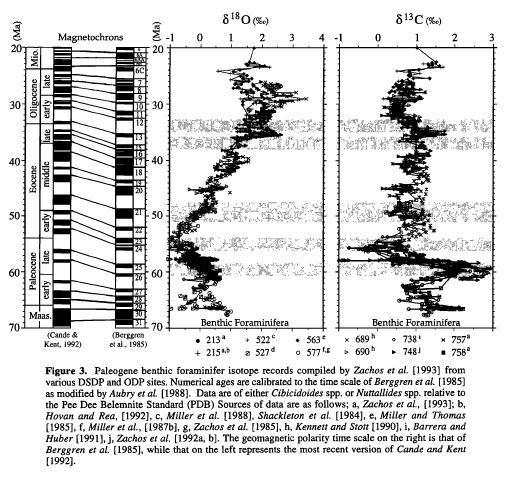Oxygen Isotope Analysis
Foraminifera are very small sea organisms that create calcium carbonate (CaCO3) shells to protect themselves. When they make their shells, they incorporate oxygen from the ocean, which contains both 16O and 18O, and as a result, scientists can use foraminifera shells to obtain delta-O-18 values and to determine the ocean temperature at the time of the shell's creation. Using this method, James C. Zachos created a graph of the delta-18-O value over time (1994).

Foraminifera isotope records (Zachos, 1994)
The decrease in delta-O-18 during the late Paleocene and the early Eocene shows the increase in temperature during these times.
Based off of the delta-O-18 values obtained from foraminifera shells found in ocean crust sequences, scientists have been able to reconstruct historic sea surface temperatures (SSTs) in the ocean. They have found that SSTs in the high latitude southern ocean "during the late Paleocene...were as much as 9° to 11°C higher than present-day SST[s] (Figure 12a) and over the next 3 to 4 m.y. increased by another 4°C, so that by the early Eocene, southern ocean SST[s] exceeded 14° to 16°C" (Zachos, 1994). In stark contrast, the foraminifera shells show that the low-latitude SST did not change significantly and stayed similar to current values. This delta-O-18 information reveals a sharp decrease in the temperature gradient between the low- and high-latitude oceans during the early Paleogene and, thus, supports the idea of an equable climate.
